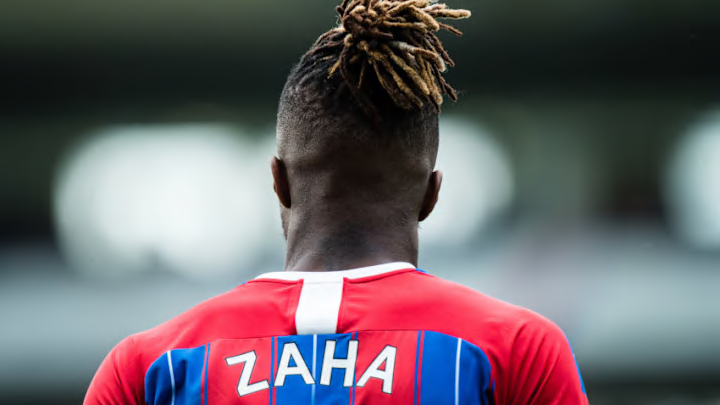With no Wilfried Zaha in Crystal Palace’s starting line-up today, Roy Hodgson failed to offer a discernible gameplan other than hit and hope.
It was often said last term – with no small degree of justification – that Crystal Palace’s attacking masterplan amounted to: give the ball to Wilfried Zaha and see what he does. In the absence of Zaha from the starting XI today, however, the approach was even more primitive.
There were plenty of complaints on social media about NBC’s decision to broadcast Bournemouth vs. Sheffield United rather than this game. Please rest assured – NBC made the right call.
For the first 45 minutes, Palace simply conceded half the pitch to the opposition, played a low block and then invariably hoofed the ball upfield – often blindly – when they regained possession, hoping for a lucky break or to win a free-kick.
The results were as ugly as they were rudimentary. Palace’s sole chances of note in the entire first-half came from one such set-piece and the series of corners that ensued. Only Everton displayed any ambition or ideas, although they were often hindered by the severe winds in South London.
Following the break, Hodgson’s side enjoyed one good spell just before the hour mark, when Everton keeper Jordan Pickford made two smart saves in quick succession. But even that was brief and only came after Everton’s Gylfi Sigurdsson had missed the best chance of the game.
Morgan Schneiderlin sees red for Everton for a second bookable offence. Crystal Palace have ten minutes to capitalise. #CPFC #EFC pic.twitter.com/gzvla6xm9q
— talkSPORT International (@talkSPORTLive) August 10, 2019
Morgan Schneiderlin’s subsequent sending off for two wholly avoidable bookings was a gift for Palace, yet they didn’t manage a single shot after the Frenchman’s dismissal, let alone a sustained period of pressure.
The club have some of the best supporters in the league – noisy at home, keen to avoid the usual clichéd chants at away grounds, and fond of mimicking the more interesting aspects of continental fan culture.
With Palace at home against a club that finished four places and just five points above them last season, those fans deserved more than a single five-minute window of promise. Nonetheless, there was no trace of mutiny in the stands here.
The obvious question is: why are they prepared to put up with this mediocrity?
After all, Hodgson’s side only managed to win five of 19 home league games last term. And he’s now had close to two full seasons to establish some patterns of play at Palace, having been appointed in the second week of September 2017.
One possible explanation is simply that the fans are used to enduring such a limited spectacle. Because make no mistake, Palace’s supporters have suffered like few others in recent times.
Over the past decade or so, the poor souls have gone through stints in the dug-out by Tony Pulis, Neil Warnock – twice – and Sam Allardyce. As a result, anyone whose main concern is for the aesthetics of the game must have checked out of Selhurst Park long ago.
The other reason for the Palace faithful’s remarkable tolerance may be that, as we saw during his ill-starred stints in charge of Liverpool and England, Hodgson doesn’t so much manage teams as expectations.
There’s been another example of this in recent months, when we’ve heard a great deal about Hodgson leading Palace to their highest ever Premier League points total last season.
What Hodgson’s apologists fail to point out, of course, is that the club had finished higher up the table three times since returning to the Premier League in 2013 than the 12th position that Hodgson secured in May.
Moreover, that 12th-place finish was secured on the back of the eighth-highest average player wages, tenth-largest transfer fee outlay and 11th-biggest total wage bill in the division.
Few men in the history of the Premier League have been celebrated so much for doing so little. But it remains to be seen how Palace supporters will react if Hodgson leads them into a relegation battle this season.
